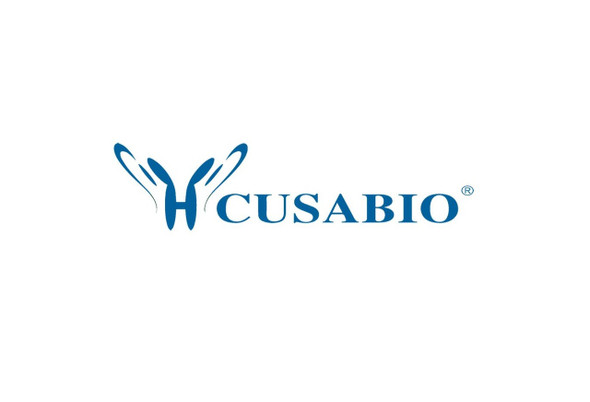Cusabio Active Proteins
Recombinant Human Interleukin-4 receptor subunit alpha (IL4R), partial (Active) | CSB-AP004271HU
- SKU:
- CSB-AP004271HU
- Availability:
- 5 to 10 Working Days
Description
Recombinant Human Interleukin-4 receptor subunit alpha (IL4R) ,partial (Active) | CSB-AP004271HU | Cusabio
Protein Description: Extracellular Domain
Alternative Name (s) : Interleukin-4 receptor subunit alpha; IL-4 receptor subunit alpha; IL-4R subunit alpha; IL-4R-alpha; IL-4RA; CD124; IL-4-binding protein; IL4-BP; IL4R; IL4RA
Gene Names: IL4R
Research Areas: Immunology
Species: Homo sapiens (Human)
Source: Mammalian cell
Tag Info: C-terminal 6xHis-tagged
Expression Region: 26-232aa
Sequence Info: MKVLQEPTCVSDYMSISTCEWKMNGPTNCSTELRLLYQLVFLLSEAHTCIPENNGGAGCVCHLLMDDVVSADNYTLDLWAGQQLLWKGSFKPSEHVKPRAPGNLTVHTNVSDTLLLTWSNPYPPDNYLYNHLTYAVNIWSENDPADFRIYNVTYLEPSLRIAASTLKSGISYRARVRAWAQCYNTTWSEWSPSTKWHNSYREPFEQH
Biological Activity: The ED50 as determined by its ability to inhibit IL-4-dependent proliferation of TF‑1 human erythroleukemic cells is less than 20 ng/ml.
MW: 24.4 kDa
Purity: Greater than 95% as determined by SDS-PAGE.
Endotoxin: Less than 1.0 EU/µg as determined by LAL method.
Relevance: Interleukin 4 Receptor alpha (IL4-Ra) is a widely expressed 140 kDa transmembrane glycoprotein in the class I cytokine receptor family. Mature human IL4-Ra consists of a 207 amino acid (aa) extracellular domain (ECD) that contains a cytokine binding region and one fibronectin type III domain, a 24 aa transmembrane segment, and a 569 aa cytoplasmic domain that contains one Box 1 motif and one ITIM motif. IL4-Ra plays an important role in Th2-biased immune responses, alternative macrophage activation, mucosal immunity, allergic inflammation, tumor progression, and atherogenesis. Soluble forms of IL4-Ra, generated by alternate splicing or proteolysis, retain ligand binding properties and inhibit IL-4 bioactivity. IL4-Ra is a component of two distinct receptor complexes and shows species selectivity between human and mouse. It can associate with the common gamma chain (γc) to form the IL-4 responsive type I receptor in which γc increases the affinity for IL-4 and enables signaling. It can alternatively associate with IL13-Ra1 to form the type II receptor which is responsive to both IL-4 and IL-13. The use of shared receptor components contributes to the overlapping biological effects of IL-4 and IL-13 as well as other cytokines that utilize γc.
PubMed ID:
Notes: Repeated freezing and thawing is not recommended. Store working aliquots at 4℃ for up to one week.
Function: Receptor for both interleukin 4 and interleukin 13. Couples to the JAK1/2/3-STAT6 pathway. The IL4 response is involved in promoting Th2 differentiation. The IL4/IL13 responses are involved in regulating IgE production and, chemokine and mucus production at sites of allergic inflammation. In certain cell types, can signal through activation of insulin receptor substrates, IRS1/IRS2.
Involvement in disease:
Subcellular Location: Cell membrane, Single-pass type I membrane protein, SUBCELLULAR LOCATION: Isoform 2: Secreted
Protein Families: Type I cytokine receptor family, Type 4 subfamily
Tissue Specificity: Isoform 1 and isoform 2 are highly expressed in activated T-cells.
Paythway: Jak-STATsignalingpathway
Form: Lyophilized powder
Buffer: Lyophilized from a 0.2 μm filtered 1xPBS, pH 7.4
Reconstitution: We recommend that this vial be briefly centrifuged prior to opening to bring the contents to the bottom. Please reconstitute protein in deionized sterile water to a concentration of 0.1-1.0 mg/mL.We recommend to add 5-50% of glycerol (final concentration) and aliquot for long-term storage at -20℃/-80℃. Our default final concentration of glycerol is 50%. Customers could use it as reference.
Uniprot ID: P24394
Uniprot Entry Name:
HGNC Database Link: HGNC
UniGene Database Link: UniGene
KEGG Database Link: KEGG
STRING Database Link: STRING
OMIM Database Link: OMIM









